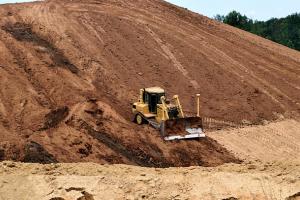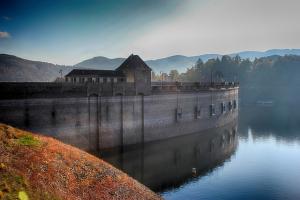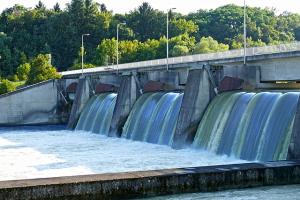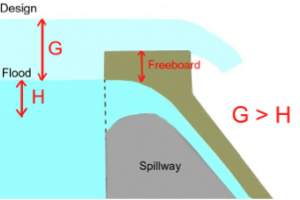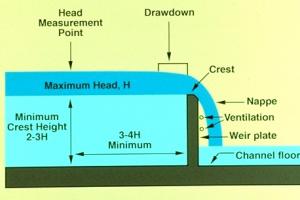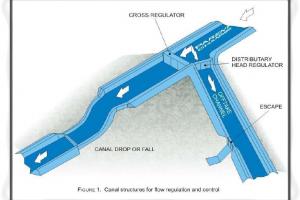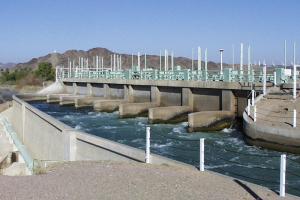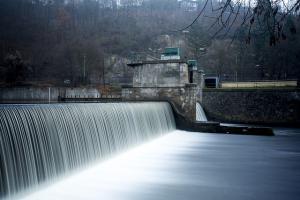Selection of a Suitable Site and Type of Cross Drainage Work
Selection of a Suitable 'Site' for Cross Drainage Work
The following points should be considered while selecting the site of a cross-drainage work:
- At the site, the drainage should cross the canal alignment at right angles. Such a site provides good flow conditions and also the cost of the structure is usually a minimum.
- The stream at the site should be stable and should have stable banks.
- For economical design and construction of foundations, a firm and strong sub-stratum should exit below the bed of the drainage at a reasonable depth.
- The site should be such that long and high approaches of the canal are not required.
- The length and height of the marginal banks and guide banks for the drainage should be small.
- In the case of an aqueduct, sufficient headway should be available between the canal trough and the high flood level of the drainage.
- The water table at the site should not be high, because it will create De-watering problems for laying foundations.
- As far as possible, the site should be selected d/s of the confluence of two streams, thereby avoiding the necessity of construction of two cross-drainage works.
- The possibility of diverting one stream into another stream upstream of the canal crossing should also be considered and adopted, if found feasible and economical.
- A cross-drainage work should be combined with a bridge, if required. If necessary, the bridge site can be shifted to the cross-drainage work or vice versa. The cost of the combined structure is usually less. Moreover, the marginal banks and guide banks required for the river training can be used as the approaches for the village roads.
Also see: Factors Affecting Site Selection for Cross Drainage Works

Selection of a Suitable 'Type' of Cross Drainage Work
The following factors should be considered while selecting the most suitable type of the cross-drainage work.
1. Relative levels and discharges:
The relative levels and discharges of the canal and of the drainage mainly affect type of cross-drainage work required. The following are the broad outlines:
- If the canal bed level is sufficiently above the H.F.L. of the drainage, an aqueduct is selected.
- If the F.S.L. of the canal is sufficiently below the bed level of the drainage, a super-passage is provided.
- If the canal bed level is only slightly below the H.F.L. of the drainage, and the drainage is small, a siphon aqueduct is provided. If necessary, the drainage bed is depressed below the canal.
- If the F.S.L. of the canal is slightly above the bed level of the drainage and the canal is of small size, a canal syphon is provided.
- If the canal bed and the drainage bed are almost at the same level, a level crossing is provided when the discharge in the drainage is large, and an inlet-outlet structure is provided when the discharge in the drainage is small. However, the relative levels of the canal and the drainage can be altered to some extent by changing the canal alignment to have another crossing. In that case, the most suitable type of the cross-drainage work will be selected depending upon the levels at the changed crossing.
2. Performance:
As far as possible, the structure having an open channel flow should be preferred to the structure having a pipe flow. Therefore, an aqueduct should be preferred to a syphon aqueduct. Likewise, a super-passage should be preferred to a canal siphon. In the case of a syphon aqueduct and a canal syphon, silting problems usually occur at the crossing. Moreover, in the case of a canal syphon, there is considerable loss of command due to loss of head in the canal. The performance of inlet-outlet structures is not good and should be avoided.
3. Provision of road:
An aqueduct is better than a super-passage because in the former, a road bridge can easily be provided along with the canal trough at a small extra cost, whereas in the latter, a separate road bridge is required.
4. Size of drainage:
When the drainage is of small size, a syphon aqueduct will be preferred to an aqueduct as the latter involves high banks and long approaches. However, if the drainage is of large size, an aqueduct is preferred.
5. Cost of earthwork:
The type of cross-drainage work which does not involve a large quantity of earthwork of the canal should be preferred.
6. Foundation:
The type of cross-drainage work should be selected depending upon the foundation available at the site of work.
7. Material of construction:
Suitable types of material of construction in sufficient quantity should be available near the site for the type of cross-drainage work selected. Moreover, the soil in sufficient quantity should be available for constructing the canal banks if the structure requires long and high canal banks.
8. Cost of construction:
The cost of construction of cross-drainage work should not be excessive. The overall cost of the canal banks and the cross-drainage work, including maintenance cost, should be a minimum.
9. Permissible loss of head:
Sometimes, the type of cross-drainage is selected considering the permissible loss of head. For example, if the head loss cannot be permitted in a canal at the site of cross-drainage, a canal syphon is ruled out.
10. Subsoil water table:
If the subsoil water table is high, the types of cross-drainage which requires excessive excavation should be avoided, as it would involve De-watering problems.
11. Canal alignment:
The canal alignment is sometimes changed to achieve a better type of cross-drainage work. By changing the alignment, the type of cross-drainage can be altered. The canal alignment is generally finalized after fixing the sites of the major cross-drainage works.



